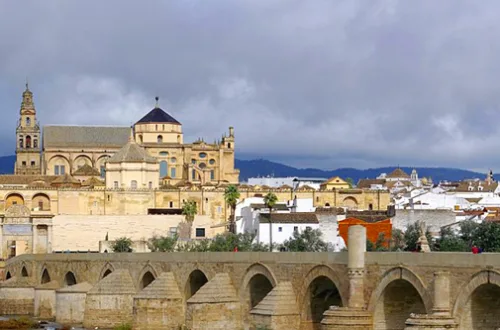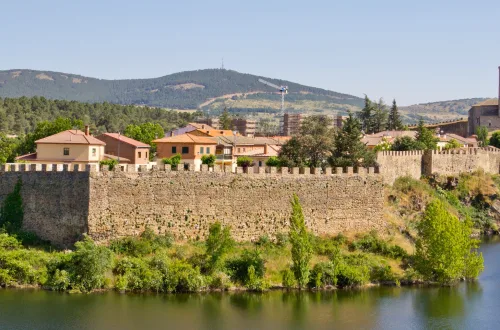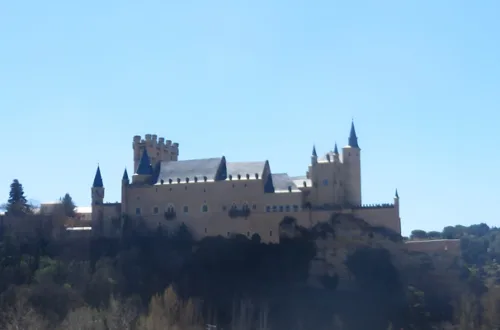
Córdoba city walls, historical gates & old towers: a comprehensive guide
Córdoba, located in the heart of Andalusia, beckons with echoes of its illustrious past. This city, a canvas painted with the strokes of Roman, Islamic, and Christian influences, invites you on a journey through time. Here, the Córdoba city walls and historical gates stand as silent witnesses to centuries of history. They tell tales of conquests, cultures, and civilizations that have swept through this land.
- Where is Córdoba?
- What Makes Córdoba Special
- The Tapestry of Time: Córdoba City Walls Historical Journey
- Echoes of the Past: Córdoba City Walls
- Unveiling the Historical Gates: The Guardians of Córdoba's Past
- Exploring the Old Towers of Córdoba: A Glimpse into the Past
- Discovering Córdoba: Activities That Bring its city walls and historical gates to Life
- Planning Your Journey to Córdoba: When to Go and How Long to Stay
“Walls protect and walls limit. It is in the nature of walls that they should fall. That walls should fall is the consequence of blowing your own trumpet.”
― Jeanette Winterson
Where is Córdoba?
Córdoba lies gracefully in southern Spain’s Andalusia region. It’s a gem, easily reached from major cities like Madrid and Seville. Whether you’re catching a high-speed train or driving through the picturesque Spanish countryside, Córdoba is accessible and inviting. Its strategic location has made it a crossroads of history, where every alley and street corner has a story to tell.
What Makes Córdoba Special
What sets Córdoba apart is its extraordinary blend of cultures. Roman foundations give way to Islamic masterpieces, which are overlaid with Christian reconquest. This fusion is nowhere more evident than in the city’s heart, where the Córdoba city walls encircle ancient stories. Furthermore, the historical gates serve as portals to a bygone era, each with its own unique narrative.
In addition, the historic center of Córdoba, a UNESCO World Heritage Site, is a testament to the city’s cultural significance. However, it’s not just the buildings and monuments that captivate, but the living history that permeates the air. Here, past and present coalesce, offering a glimpse into a time when Córdoba was a beacon of knowledge, art, and tolerance.
As you wander through Córdoba, let its walls and gates guide you. They lead to hidden courtyards, vibrant markets, and serene gardens. Each step through this historical tapestry reveals the city’s soul, enriched by centuries of diverse influences.
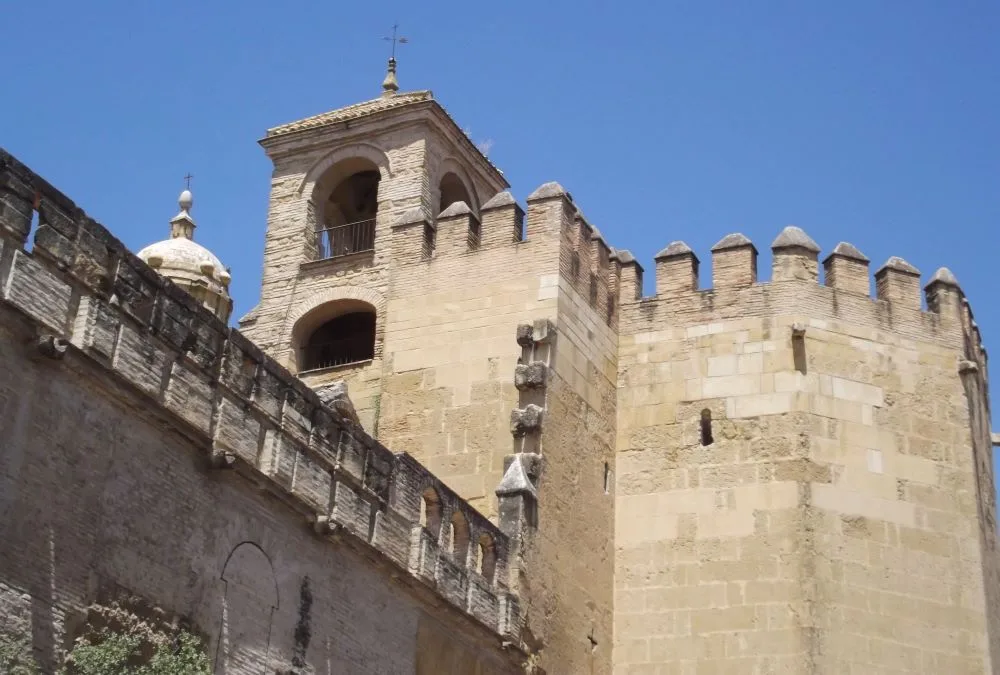
The Tapestry of Time: Córdoba City Walls Historical Journey
Córdoba’s story begins in the hands of the Romans. They laid the city’s first stones, establishing a settlement that would grow into a bustling metropolis. The Córdoba city walls, remnants of this era, still stand. These ancient barriers tell tales of a city that was once a pivotal Roman hub. The Romans introduced architectural marvels, including the initial construction of the walls and gates that safeguarded the city.
As centuries turned, Córdoba found a new destiny under Islamic rule. It blossomed into the capital of the Islamic Caliphate, a center of learning and culture. The city’s walls, expanded and reinforced, stood resilient against invaders. Many historical gates were added, serving not just as entry points but as symbols of Islamic architectural prowess. This period gifted Córdoba with an architectural renaissance, enriching its landscape with mosques, palaces, and fortified towers.

From Roman to Modern Córdoba city walls
The wheel of time spun yet again, bringing the Christian reconquest to Córdoba’s doorstep. The city’s identity transformed once more. Christian kings walked through its historical gates, leaving their mark on its streets and buildings. The Córdoba city walls were fortified even further, carrying the city’s enduring spirit of resilience. Towers that once echoed with the call to prayer now pealed with church bells, signifying a new chapter in Córdoba’s long history.
Through Roman foundations, Islamic glory, and Christian conquests, Córdoba’s walls, gates, and towers have stood the test of time. They are not mere structures but guardians of history. Each stone, each archway, carries the weight of centuries, protecting the legacy of a city that has been a beacon of civilization through the ages.

Echoes of the Past: Córdoba City Walls
Step into History: Right in the heart of Córdoba, the ancient Córdoba city walls stand tall, marking the passage of time. These impressive structures, rooted in both Roman and Moorish history, wrap around the old city like a protective embrace, each stone telling tales from long ago. Imagine walking beside these walls, following the same paths that generations before you have taken, each step a journey through history.
From Romans to Moors: Built by the Romans, these walls were the first lines of defense for a city destined to be a melting pot of cultures. Their main goal? To keep the city safe. But as centuries passed and the Moors took over, the Córdoba city walls underwent a transformation. They were not just expanded but also reinforced, a testament to Moorish architectural brilliance. The walls became stronger, adorned with historical gates that were as much about beauty as they were about defense.
The Alcázar’s Ancient Defenses
Amidst the lush gardens and majestic palace, the Alcázar de los Reyes Cristianos holds more than meets the eye. It preserves parts of the ancient walls that once shielded this royal and military haven. These walls whisper tales of power, intrigue, and history, inviting visitors to explore the depths of Córdoba’s past.
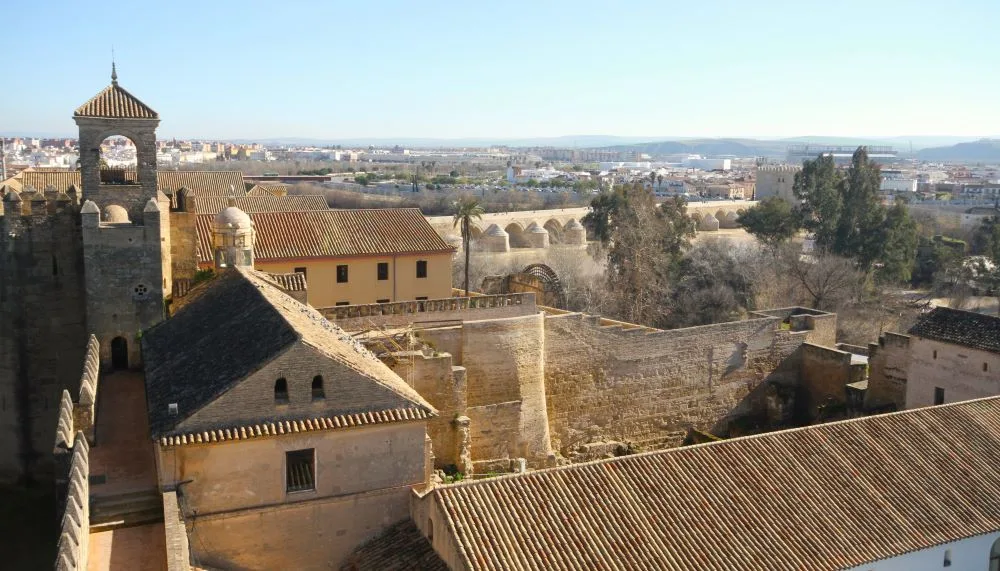
The Storyteller Stones of Calle Cairuán (a fragment of Córdoba city walls)
The Córdoba city walls trace their roots back to various epochs, with the section along Calle Cairuán encapsulating the essence of the Medina’s historical boundary. Here, each stone tells a story, a silent testimony to the lives and times of those who once roamed within these confines. This segment is more than just a boundary; it’s a symbol of Córdoba’s rich cultural tapestry.
Embracing History at Muralla del Marrubial
Among the remnants of Córdoba’s city walls, the Muralla del Marrubial is particularly noteworthy. As the most extensive surviving section from the Almoravid period, it encircles the eastern part of the historic center. This wall has witnessed Córdoba’s transformation, serving as a steadfast guardian through the sands of time.
The Enigmatic City Walls de la Huerta del Alcázar y San Basilio
This particular stretch stands out not just for its length, but also for its architectural marvels, including several towers and a unique octagonal one. It’s a piece of history that connects us to the city’s medieval era, offering a tangible link to the days when these walls stood as formidable barriers against invaders.
Muro de la Misericordia
As part of the Almoravid wall that safeguarded the Ajerquía suburb, the Muro de la Misericordia is a rare survivor from the 19th-century demolition wave. It stands as a testament to the city’s architectural ingenuity and its strategic importance in times gone by.

Walking alongside these walls, you’re following in the footsteps of history. Each stone is a chapter in Córdoba’s story, each gate an invitation to delve deeper into its past. The historical gates embedded in these walls served as points of entry and exit, playing crucial roles in the city’s defense and daily life.
Unveiling the Historical Gates: The Guardians of Córdoba’s Past
Córdoba, a city encircled by history, invites you to explore its historical gates. These gateways, integral to the Córdoba city walls, are not just passages but storied monuments, each with its own tale.
Puerta de Almodóvar
This gate stands as a testament to Córdoba’s Christian heritage. Built in the 14th century, it marks a significant entrance to the city. Walking through the Puerta de Almodóvar, you step into a chapter of history where knights and nobles once tread.

Puerta de la Luna
Venture into the Jewish Quarter through this gate, and you’re immediately enveloped in layers of history dating back to the 17th century. The Puerta de la Luna serves as a portal to a time when this quarter buzzed with life, offering a unique glimpse into Córdoba’s diverse cultural tapestry.
Puerta de Sevilla: bridging the Córdoba city walls
This medieval gate, bridging Córdoba with Seville, carries tales of Islamic craftsmanship and strategic military design. Its dual role as a fortification and aqueduct highlights the ingenuity of past civilizations. The Puerta de Sevilla stands as a reminder of the city’s pivotal role in connecting regions and cultures.
Puerta del Puente
Rebuilt for King Felipe II’s visit in the 16th century, this gate’s foundation has witnessed the comings and goings of Córdoba since Roman times. As a major entry point, the Puerta del Puente encapsulates the essence of the city’s historical significance, inviting modern explorers to walk in the footsteps of monarchs and soldiers.
Arco de Caballerizas
Nestled at the end of a street bearing its name, the Arco de Caballerizas holds a special place among Córdoba city walls. This historical gate, attached to the renowned Royal Stables, serves as a portal to the medieval San Basilio neighborhood, also known as Alcázar.
In addition, the wall segment extending from the Arco de Caballerizas to the nearby Torre de Belén paints a vivid picture of Córdoba’s past. Situated on the eastern flank of the neighborhood’s walled enclosure, it whispers stories of the city’s rich history.
Arco del Portillo
Moving on, the Arco del Portillo stands as another testament to Córdoba’s medieval heritage. This significant archway captures the essence of a time when the city was a bustling hub of activity. Walking through the Arco del Portillo, you’re following in the footsteps of medieval residents, traders, and travelers who once traversed this route daily.

Exploring the Old Towers of Córdoba: A Glimpse into the Past
Córdoba, a city wrapped in the embrace of history, invites you to discover its old towers. These structures, standing tall against the test of time, are not just architectural marvels but also keepers of stories from bygone eras. Among them, the Calahorra Tower and Torre de la Malmuerta hold special places in the city’s heart, each offering a unique window into Córdoba’s rich past.
The Calahorra Tower (Torre de la Calahorra)
Located at the southern tip of the Roman Bridge, this tower guards the entrance to Córdoba over the Guadalquivir River. Originally built during Islamic rule, it has been a sentinel for the city, witnessing the ebb and flow of cultures and civilizations. Today, it houses the Museo Vivo de al-Andalus, inviting you to explore the depths of Córdoba’s history during the Moorish period in Spain. As you step inside, you’re transported back in time, surrounded by echoes of the past.

Torre de la Malmuerta
This octagonal tower, erected in the 15th century at the end of Avenida de las Ollerías, stands as a testament to Córdoba’s medieval fortifications. Constructed as part of the city’s defensive walls, its unique shape and design captivate all who wander near. The Torre de la Malmuerta offers more than just a visual treat; it invites curiosity about the tales it holds within its walls.
The Torre de Belalcázar
Nestled within the confines of the Alcázar de los Reyes Cristianos, the Torre de Belalcázar stands tall as one of the four towers guarding this historical fortress. Climbing to the top, you’re rewarded with breathtaking panoramic views of Córdoba and its surroundings. Each step upwards brings you closer to the sky, offering a perspective that connects you with centuries of history below. The tower not only serves as a vantage point, but also as a symbol of the strength and beauty that define Córdoba.
The Alminar de San Juan
Though not a traditional tower, the Alminar de San Juan captures the essence of Córdoba’s Islamic architectural heritage. Once a minaret for a mosque, now repurposed for the Church of San Juan, it stands as a testament to the city’s layered history. This minaret offers an intriguing architectural comparison to other towers in Córdoba, reminding us of the cultural confluence that has shaped the city over centuries.
Torre de Belén
This tower stands as a proud testament to Córdoba’s historical depth and architectural diversity. More than just a structure, the Torre de Belén invites curiosity and wonder. It represents a piece of the city’s soul, offering a tangible connection to the past. As you stand before it, you’re not just seeing stone and mortar; you’re witnessing centuries of history unfolding.

Torre de Chancillarejo, a key piece for Córdoba city walls
Adding to Córdoba’s impressive medieval fortifications, the Torre de Chancillarejo offers a glimpse into the city’s defensive strategies. This tower, with its robust presence, tells a tale of protection and vigilance. It speaks to the ingenuity of those who built it, crafting defenses that have withstood the test of time. Exploring this tower, you delve into the strategic mind of medieval Córdoba, understanding how every stone played a role in safeguarding the city.
Torre de la Puerta del Rincón
Marking an important point in Córdoba’s defenses, this tower played a crucial role in the city’s fortification system. The Torre de la Puerta del Rincón is more than an architectural feature; it’s a marker of history, indicating how the city evolved and responded to its challenges. Standing at this tower, you’re at a crossroads of past and present, where stories of bravery and architectural prowess come alive.
Together, these towers extend beyond Córdoba city walls and historical gates, inviting you to explore the depth of Córdoba’s heritage. They may not be as renowned as other landmarks, but their stories are equally compelling. As you discover these towers, you’re not just walking through Córdoba; you’re unraveling the layers of a city that has thrived through centuries.

Discovering Córdoba: Activities That Bring its city walls and historical gates to Life
Córdoba, a city rich with history, invites you to explore its Córdoba city walls, historical gates, and towering monuments. Whether you’re a history buff, architecture enthusiast, or simply in love with culture, Córdoba has activities that cater to all. From guided tours to self-guided walks and cultural experiences, there’s no shortage of ways to immerse yourself in the city’s vibrant past and present.
Embark on Guided Tours about Córdoba’s City Walls
For those eager to dive deep into the stories behind the Córdoba city walls and historical gates, guided tours are a fantastic option. Expert guides bring the city’s history to life, sharing tales of conquests, reconquests, and the architectural marvels that have stood the test of time. These tours offer insights into Córdoba’s past and highlight the nuances of its unique architecture.
Explore at Your Pace
If you prefer the freedom to explore on your terms, consider a self-guided walking route. Wander through the winding streets, with each turn revealing another piece of Córdoba’s rich tapestry. Keep an eye out for maps or mobile apps that highlight key points of interest, ensuring you don’t miss out on any hidden gems nestled within the city’s ancient walls and gates.
Immerse in Cultural Experiences
Complement your historical exploration with a taste of Córdoba’s vibrant culture. Attend a flamenco show to experience the passion and artistry that define this traditional Spanish dance. Or, visit a local art exhibit to see how contemporary artists interpret Córdoba’s storied past. These cultural experiences add another layer to your understanding of the city, connecting you with its living heritage.
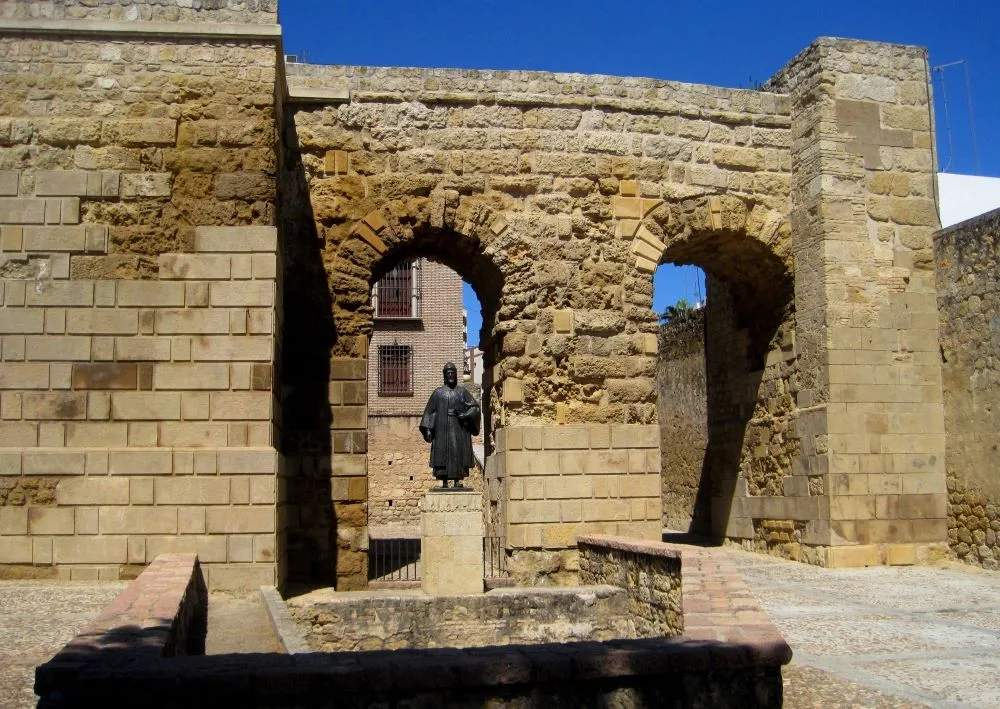
Planning Your Journey to Córdoba: When to Go and How Long to Stay
Córdoba, a city where history breathes through the Córdoba city walls and historical gates, invites you to explore its timeless beauty. But when is the best time to visit, and how long should you stay to truly embrace its culture? Let’s dive in.
When to Go visit the Córdoba city walls
To experience Córdoba at its finest, timing is key. Spring, particularly May, is magical. The city bursts into life with the Patio Festival, where courtyards bloom in vibrant colors and fragrances. The weather is pleasantly warm, perfect for wandering around the city’s ancient walls and gates. Summer brings heat and crowds, making early mornings and late evenings the best times for exploration. Autumn sees fewer tourists and mild temperatures, offering a more tranquil visit. Winter is cool but rarely harsh, ideal for those who prefer a quieter experience.

How Long to Stay
To fully appreciate Córdoba’s walls, gates, towers, and the myriad facets of its art, history, and culture, a stay of three to four days is ideal. This allows you time to meander through the city’s historical heart, visit museums, and enjoy local cuisine without a rush. Dedicate at least a day to exploring the Córdoba city walls and historical gates, immersing yourself in their stories and significance. Use the remaining time to discover Córdoba’s other treasures, from its bustling markets to serene gardens.

Conclusion
The city walls and gates of Córdoba are narratives of resilience, artistry and cultural confluence. Preserving and experiencing these historical sites is crucial for understanding our shared past and shaping our collective future. As you walk through Córdoba, let each step be a journey through time. Immerse yourself in the city’s rich cultural tapestry, and leave with memories that resonate with the echoes of history.
Visiting Córdoba is more than a trip; it’s an opportunity to connect with the soul of a city that has witnessed centuries unfold. Plan your visit thoughtfully, embracing each moment within its ancient embrace.


